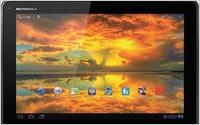One-Third Of Americans Own A Tablet
- by Mark Walsh @markfwal, June 10, 2013
 More than a third (34%) of U.S. adults now own a tablet computer, up from 18% a year ago. Those gravitating toward tablets tend to be relatively young, affluent and well-educated.
More than a third (34%) of U.S. adults now own a tablet computer, up from 18% a year ago. Those gravitating toward tablets tend to be relatively young, affluent and well-educated.
Tablet
adoption has also soared from just 3% in May 2010 -- just after the iPad’s launch -- with a noticeable uptick since the beginning of 2012, according to new findings from the Pew Research Center’s Internet & American Life Project.
People ages 35 to 49 are most likely to own a tablet (49%), followed by those 45-54 (38%), and 25-34 (37%). More than half of tablet users (56%) come from households earning at least $75,000 a year, half (49%) have at least a college degree.
Tablet adoption is spread roughly evenly among ethnic groups, at about one-third across whites, blacks and Hispanics. In terms of gender, women are slightly more like to be tablet owners, at 35% to 32%.
The study found parents are a more much likely than non-parents to own a tablet. Half of parents with minor children living at home have a tablet, compared with 27% of non-parents. The same goes for suburbanites (37%) compared to 27% of those living in rural areas. Tablet ownership grew the most rapidly in the last year among parents, $75,000-a-year or more earners, and college graduates.
The research suggests tablet adoption is catching up quickly to that of smartphones.
While tablet penetration may not necessarily double again a year from now, lower pricing and an increasingly wide selection of models are making them more ubiquitous. Research firm IDC recently projected tablet shipments worldwide will outpace those of PCs for the first time in 2013. It expects the number of tablets shipped to grow 58.7% this year to 229 million units this year.
The proliferation of tablets is also having an impact on mobile advertising. While smartphones currently get the lion’s share (58%) of mobile ad dollars, spending allocated to tablets is expected to expand at a faster rate in the next couple of years, according to a study released last week by Advertiser Perceptions Inc.
The firm found that ad executives see tablets as more an extension of traditional “engagement” based advertising, while the data-driven experiences on smartphones were viewed as more suited to performance marketing. Tablet ad spending is also more likely to be funded from print and TV budgets, while smartphone ad dollars are drawn from “digital” budgets.
The latest Pew research on tablet ownership was based on a survey of 2,252 Americans ages 18 and older in May.


